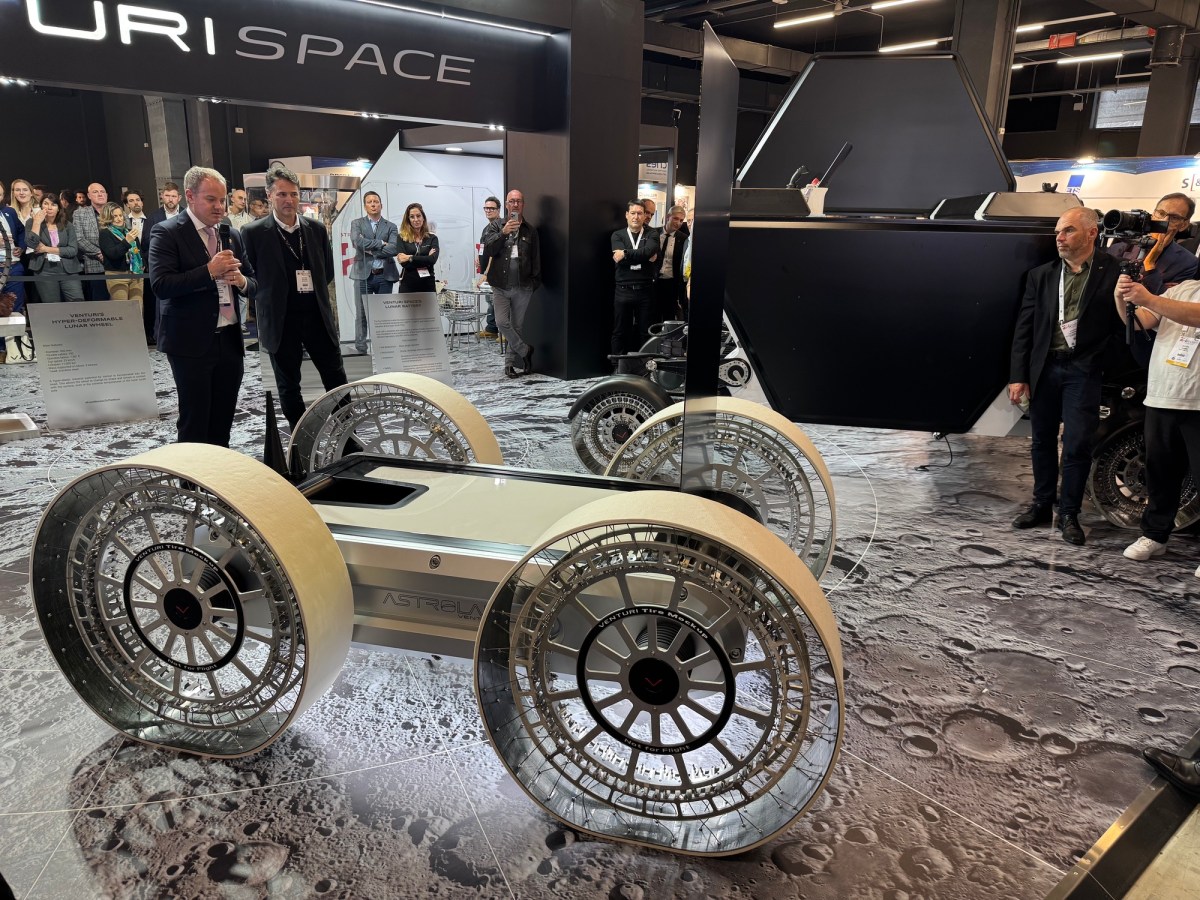MILAN — Venturi Astrolab, a company developing large lunar rovers for roles that include transporting astronauts on Artemis missions, will first fly a smaller rover primarily as a tech demo mission.
In a presentation at the International Astronautical Congress here Oct. 15, Astrolab announced plans to build the FLEX Lunar Innovation Platform, or FLIP, rover for launch as soon as the end of 2025. The half-ton rover will have a payload capacity of 30 to 50 kilograms.
A key purpose of FLIP is to test key systems for its larger FLEX, or Flexible Logistics and Exploration, rover, maturing their technology readiness levels (TRLs). “We want to raise the TRL of our technologies ahead of our other missions,” said Jaret Matthews, founder and chief executive of Astrolab.
FLIP will test the same battery modules that the larger FLEX will use and has the same tires as FLEX. Other technologies Astrolab plans to test on the smaller rover include actuators, power systems and communications.
FLIP also provides a way to serve customers who may not need the same payload capacity as FLEX, which is designed to carry up to 1,500 kilograms of payload. “It was a response to customer demand and an interest in having diversified ways to get to the moon,” he said.
Matthews said Astrolab has only been working on FLIP for about six weeks. “This is largely a repackaging of FLEX systems,” he said. “It’s really an iteration step toward the ultimate FLEX.” The company had been working on what it called a “thermal model validation unit” for ground tests, but decided to turn that test article into the FLIP rover.
Astrolab did not disclose how it will get FLIP to the moon other that it will use one of the commercial lunar landers developed to support NASA’s Commercial Lunar Payload Services (CLPS) program. “It’s designed to work with some of the CLPS landers. There are a couple in this weight class, so we’re hopeful to get it flight-ready by the end of next year and assess our options.”
One possibility is flying on Griffin, a lander that Astrobotic Technologies is developing under a CLPS task order that was originally intended to deliver NASA’s Volatiles Investigating Polar Exploration Rover (VIPER) mission. NASA announced in July it would cancel VIPER but retain the CLPS task order to Astrobotic so that it can fly Griffin with a mass simulator or other payload.
VIPER is similar in size to FLIP. Asked if Griffin was an option for delivering the rover, Matthews said only, “Stay tuned.”
FLIP is designed for the south pole of the moon, with features like a vertical solar array optimized for operations there. “That’s ultimately where we think the market is going to be,” he said. It also makes it easier to survive the lunar night, which can be shorter based on lighting conditions; the goal with FLIP to make it through at least one lunar night.
Lessons from FLIP will go into the larger FLEX rover, which Astrolab plans to send to the moon on a commercial SpaceX Starship lander as soon as 2026. Astrolab is also one of three companies selected by NASA in April for study contracts for its Lunar Terrain Vehicle Services program for a rover to be used by astronauts on later Artemis missions. NASA plans to pick one company to develop that rover, offering it to NASA through a services contract.
